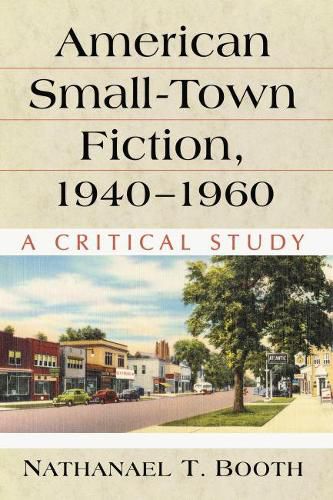Readings Newsletter
Become a Readings Member to make your shopping experience even easier.
Sign in or sign up for free!
You’re not far away from qualifying for FREE standard shipping within Australia
You’ve qualified for FREE standard shipping within Australia
The cart is loading…






This title is printed to order. This book may have been self-published. If so, we cannot guarantee the quality of the content. In the main most books will have gone through the editing process however some may not. We therefore suggest that you be aware of this before ordering this book. If in doubt check either the author or publisher’s details as we are unable to accept any returns unless they are faulty. Please contact us if you have any questions.
In politics, literature, and popular culture the small town is closely identified with the American national experience. But what do we talk about when we talk about the small town? Does the national myth conceal a deep-seated reactionary tendency or does it hold within it the seeds of a new national imagining? The truth is that it does both; as a model of America, the literary both obscures and reveals the contradictions at the heart of the American experience.
During the years from 1940 to 1960, America underwent a tremendous shift in terms of self-fashioning and self-mythologizing. This shift can be charted in representations of small towns. Authors like Henry Bellamann and Grace Metalious continued the tradition of Sherwood Anderson by showing the small town (and, therefore, America itself) as profoundly warping the souls of its citizens. Meanwhile, Ray Bradbury, Toshio Mori, and Ross Lockridge, Jr. sought to identify within the small town a potential for growth-away from the shadows cast by World War II and toward a more inclusive (and democratic) future. Examined together, these works are key aids toward understanding how America at midcentury refashioned itself in light of a new post-World War II order.
$9.00 standard shipping within Australia
FREE standard shipping within Australia for orders over $100.00
Express & International shipping calculated at checkout
This title is printed to order. This book may have been self-published. If so, we cannot guarantee the quality of the content. In the main most books will have gone through the editing process however some may not. We therefore suggest that you be aware of this before ordering this book. If in doubt check either the author or publisher’s details as we are unable to accept any returns unless they are faulty. Please contact us if you have any questions.
In politics, literature, and popular culture the small town is closely identified with the American national experience. But what do we talk about when we talk about the small town? Does the national myth conceal a deep-seated reactionary tendency or does it hold within it the seeds of a new national imagining? The truth is that it does both; as a model of America, the literary both obscures and reveals the contradictions at the heart of the American experience.
During the years from 1940 to 1960, America underwent a tremendous shift in terms of self-fashioning and self-mythologizing. This shift can be charted in representations of small towns. Authors like Henry Bellamann and Grace Metalious continued the tradition of Sherwood Anderson by showing the small town (and, therefore, America itself) as profoundly warping the souls of its citizens. Meanwhile, Ray Bradbury, Toshio Mori, and Ross Lockridge, Jr. sought to identify within the small town a potential for growth-away from the shadows cast by World War II and toward a more inclusive (and democratic) future. Examined together, these works are key aids toward understanding how America at midcentury refashioned itself in light of a new post-World War II order.